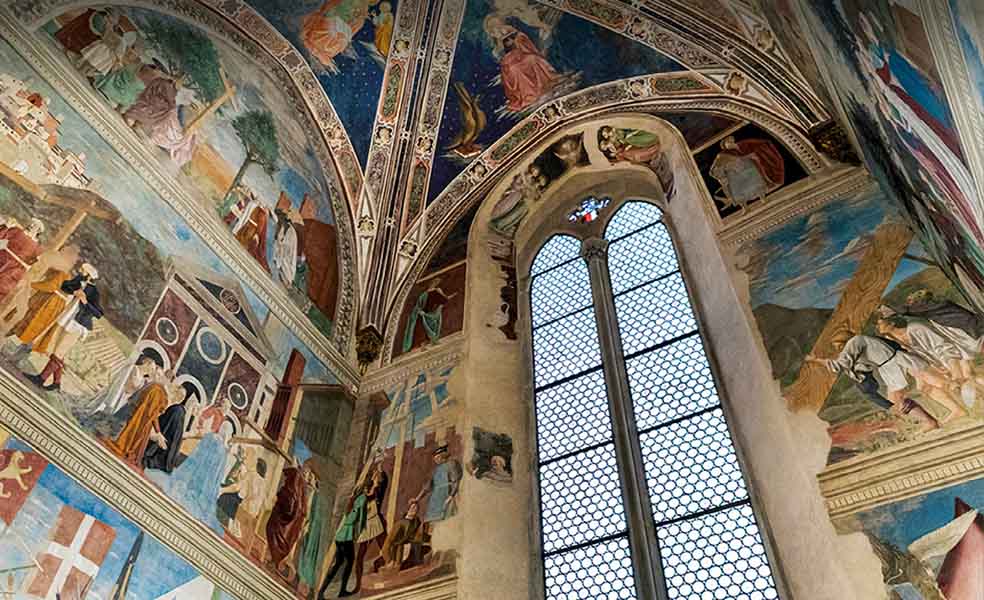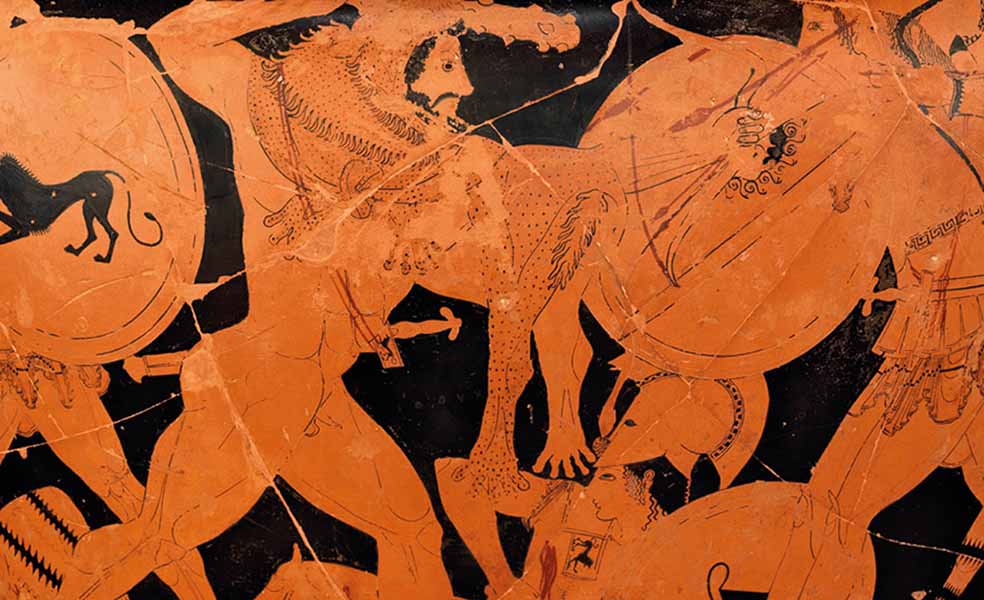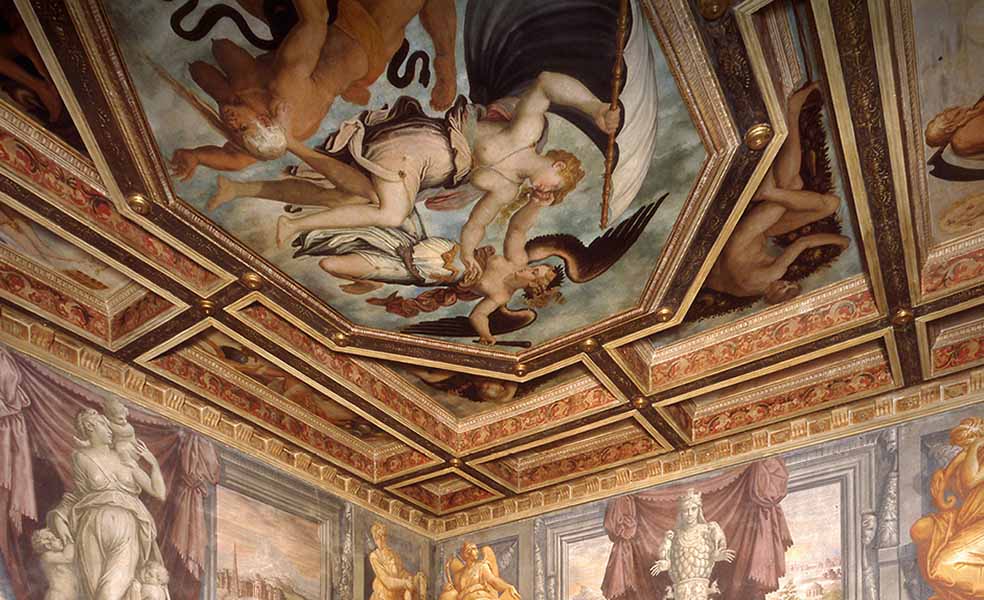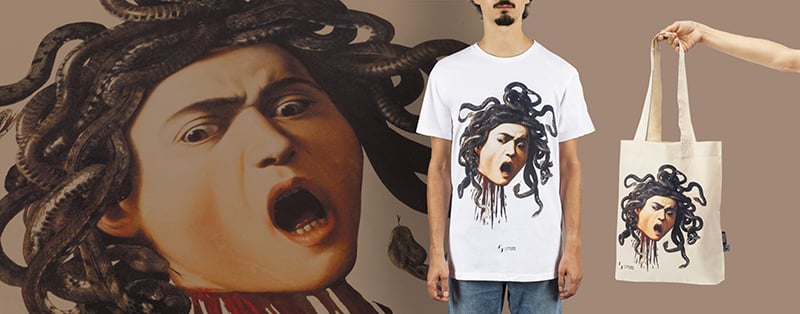Home / Museums / Fortezza Medicea
Fortezza Medicea

A terrace over the city
A jewel of 16th century military architecture, the Fortezza Medicea stands on the hill of San Donato. An exceptional lookout point, an acropolis of the Etruscan city, in different historical periods the main events of the city’s history took place here.
Arezzo’s first fortified nucleus was built on this hill between the 9th and 11th centuries A.D. and the remains of the church of San Donato in Cremona belong to that period, while Porta Sant’Angelo is all that remains of the ancient keep built in the 14th century by bishop-count Guido Tarlati.
The design of the present fortress, a bulwark of Florentine rule during the Middle Ages, was commissioned in the early 16th century to the Florentine architects Giuliano and Antonio da Sangallo and was completed in 1540 at the behest of the Grand Duke of Tuscany Cosimo I de’ Medici. It features a star-shaped plan with five bastions designed by the architect Antonio da Sangallo the Younger.
A wide moat surrounded the complex, accessible through three gates, one of which, ‘La Spina’, was located inside the bastion facing the city and the only one not to be heart-shaped, typical of the Medici defensive structures.
The military garrison was decommissioned at the end of the 18th century and was purchased by Count Vittorio Fossombroni in 1816, who later bequeathed it to the Municipality of Arezzo.
A place of culture and relaxation, today it is a destination for walks, and the site of art exhibitions and events.
Temporary exhibitions
Vedova Tintoretto. Conferenze di approfondimento
Vedova Tintoretto. In dialogue. Series of free conferences
From October to December 2025, three free conferences will explore some of the themes presented in the exhibition, which investigates the relationship between Vedova and Tintoretto and, more generally, the master-pupil relationship. Tintoretto and Emilio Vedova will be discussed by the two curators of the exhibition, Gabriella Belli and Giovanni C. F. Villa, and art historian Stefano Cecchetto, who curated the 2013 exhibition at the Scuola Grande di San Rocco.
Free admission to conferences, subject to availability. No reservation required.
Monday, October 27, 2025, 5:00 p.m.
Vedova and Tintoretto. Companions on the road
With Giovanni Carlo Federico Villa, Director of Palazzo Madama and curator of the exhibition
In the second half of the sixteenth century, the city of Venice was marked by the creative whirlwind of Tintoretto, an artist characterized by an unparalleled capacity for work, combined with an ability to fully capture the spirit of all his fellow citizens. Tintoretto was not only the painter of Venetian “furor,” but also the artist who transformed painting into theater and vision. His canvases are not to be contemplated, but traversed: flashes of light pierce the shadows, bodies twist in a tension that draws the viewer in. He is a storyteller who anticipates cinema, a director of sacred and profane scenes, capable of giving voice to the restlessness of his time. To look at Tintoretto is to be drawn into the work, to participate in the drama, to feel the vertigo of an art that still questions and shocks today.
Giovanni Carlo Federico Villa
Director of Palazzo Madama and President of the University of Science, Literature, and Arts of Bergamo, he teaches Modern Art History and Museology and Museography at the University of Bergamo. A former member of the Higher Council for Cultural and Landscape Heritage of the Ministry of Culture (2019-2022), he was honorary director of the Civic Museums of Vicenza and the Public Monuments Conservatory (2015-2018). He has curated numerous exhibition projects abroad and in Italy, including those for the Scuderie del Quirinale in Rome (2006-2013). Author of over three hundred scientific publications and monographs, he has made numerous appearances on major Italian and foreign radio and television channels to discuss the national artistic heritage.
Monday, November 17, 2025, 5:00 p.m.
So far, so close…
With Gabriella Belli, art historian and curator of the exhibition
A comparison, four hundred years apart, between two giants of ancient and contemporary art, Tintoretto and Vedova, with the city of Venice as their accomplice. The meeting will focus in particular on the reasons that drive many contemporary artists to measure themselves against the great masters of the past, and on how contemporaries choose their fathers. This is a crucial theme that has always characterized the passing of the baton between generations, but which has taken on unique developments in 20th-century art, given that the transition from pupil to master is no longer based on style, but on far more mysterious elective affinities.
Born in Trento, Gabriella Belli graduated in Art History in Bologna and specialized in Art Criticism in Parma. From 1981 to 1987, she was head of the contemporary art section of the Castello del Buonconsiglio at Palazzo delle Albere in Trento, then director from 1987 to 2011 of MART – Museum of Modern and Contemporary Art of Trento and Rovereto, and from December 2011 to August 2022 she was director of the Fondazione Musei Civici di Venezia.
She has carried out her scientific work in the field of 19th and 20th century art, with particular attention to 20th century Italy, Divisionism, Futurism, Magical Realism, and numerous forays into international contemporary art. She has published numerous essays and directed and curated more than 300 exhibitions, presented in the venues she directed but also in other museums in Italy and abroad, in Milan, Rome, Piacenza, Paris, Sao Paulo, St. Petersburg, Moscow, Berlin, Beijing, Toronto, Washington, and Lugano.
She taught contemporary art history at the University of Trento and 20th-century art history at the Academy of Architecture in Mendrisio. From 2002 to 2011, she was president of the National Association of Italian Contemporary Art Museums (AMACI). In 2011, she was awarded the title of Knight of Arts and Letters by the French Minister of Culture. Also in 2011, she was awarded the prize for best museographer of the year by ICOM-Italy. She is currently a consultant for the scientific activities and multi-year program of Villa Panza FAI-Varese, a member of the National Academy of San Luca, and a member of the Technical-Scientific Committee for Museums and the Economy of Culture of the Ministry of Cultural Heritage and Activities.
Monday, December 1, 2025, 5:00 p.m.
Inside San Rocco. From black/In precipito
With Stefano Cecchetto, art historian and curator
“Tintoretto was someone I identified with. That space, in fact, a series of events… Caves of shadow from a flash of light, wells of light and shadow, the shadows of sinking, in precipitous places.” In 2013, Emilio Vedova’s canvases entered into dialogue with Tintoretto’s cycle at the Scuola Grande di San Rocco, a ‘hand-to-hand combat’ resolved in the externalization of the pictorial sign, a shared state of mind that can be seen in the expressionism of the gesture and in the ‘imperfect’ instinct of that impetus. A Conversation/Laceration narrated by one of the protagonists of that event.
Art historian and curator Stefano Cecchetto (Venice, 1954) collaborates with important museums and cultural institutions in Italy and abroad. From 1984 to 1997, he worked for La Biennale di Venezia, coordinating the publication of catalogs. From 1998 to 2003, he was artistic consultant to the Bevilacqua La Masa Foundation in Venice. Since 2008, he has been artistic director of the Museo del Paesaggio. Since 2025, he has been president of the Archivio Artisti Veneti. His essays have been published in numerous art catalogs. In 2008, he published the book La Città, breve storia di una rivista di lettere ed arti a Venezia, 1964-1967 (The City, a brief history of a magazine of letters and arts in Venice, 1964-1967) for Cicero editions; in 2011, he published Ezio Gribaudo e Lucio Fontana, Cronaca di un viaggio americano (Ezio Gribaudo and Lucio Fontana, Chronicle of an American Journey) for Skira. In 2014, he published Giorgio de Chirico, Memorie ritrovate (Giorgio de Chirico, Rediscovered Memories) for Skira, and in 2020, he published Monkey Tintoretto e Vedova, Conversazione/Lacerazione (Conversation/Laceration) for Monkey Tintoretto e Vedova.
Conferences are free to attend until all seats are filled. No reservation is required.
Mon, Wed, Thu, Fri: from 11am to 7pm
Sat, Sun: from 10am to 8pm
2-3 hours
Temporary exhibitions included in the ticket price
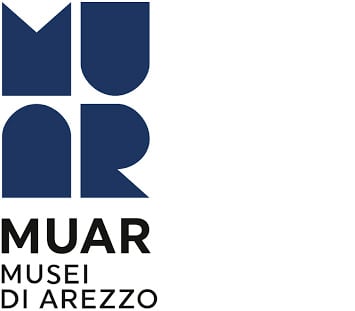
Books and guides
No products were found matching your selection.
Merchandise
No products were found matching your selection.
Related museums
From €9,00
Arezzo, the city of Maecenas and coral vases.
The National Archaeological Museum in Arezzo, named after Maecenas, holds one of the most important archaeological collections in Tuscany and, together with the Roman Amphitheatre, tells the ancient history of this city.
Average visit time:
1-2 hours
From €7,00
Beautiful gardens in the suburb of San Vito, in the best air of the city.
‘[…] I began by buying a house in Arezzo in the suburb of San Vito, where you can breathe the best air in this city […]”: with these words Vasari described his house, bought in 1541, which today houses the museum of the same name.
Average visit time:
1-2 hours


